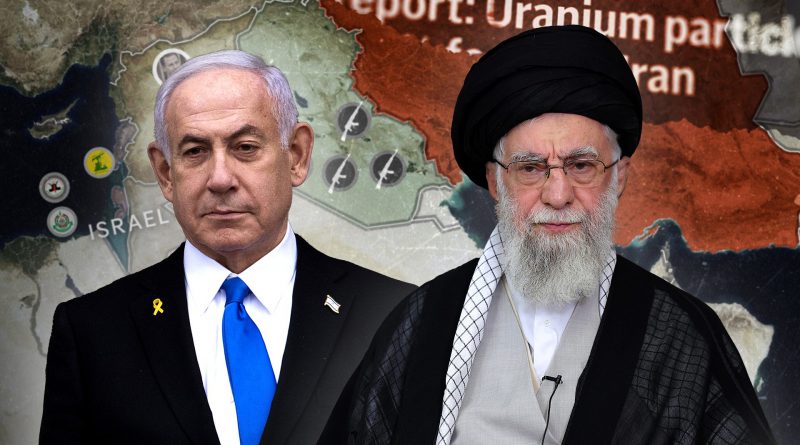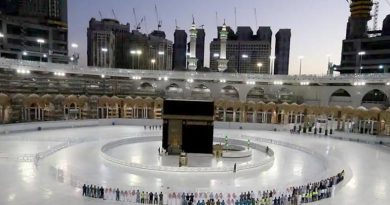Weapons Silent, Strategies Active: Israel’s Post-War Game Plan
Iran’s weakened financial situation may reduce its ability to bankroll Palestinian proxies, but alternative funding—especially from Qatar—remains available.
The guns have fallen silent—for now. After a dramatic round of hostilities between Israel and Iran, reports of a ceasefire mediated by the United States and Qatar have emerged. But in the foggy aftermath of conflict, the strategic question looms large: How can Israel translate its significant military achievements into sustainable diplomatic leverage?
The answer lies not only in the battlefield success but also in the precision with which Israel manages post-war strategy, regional alliances, and international diplomacy.
The Military Scorecard: A Strategic Reset
According to regional analysts and Israeli defense sources, the recent strikes dealt a major blow to Iran’s nuclear and missile capabilities. Multiple high-value assets—including command centers, ballistic missile launchers, and uranium enrichment infrastructure—were reportedly neutralized.
Former Israeli intelligence officials suggest the operation may have set back Iran’s nuclear program by several years. Enriched uranium in gaseous form, typically stored in Fordow and Natanz, is now inaccessible due to destroyed conversion facilities. While fears of a hidden uranium stockpile persist, Israeli intelligence believes much of it is unusable without specialized infrastructure—which was intentionally targeted.
What’s more, Iran’s ability to project missile power has been severely reduced. Though some projectiles reached Israeli cities like Be’er Sheva, the quantity and impact were far lower than anticipated, signaling Iran’s declining capacity for sustained offensive operations.
Exposing Iran’s Strategic Vulnerabilities
Beyond hardware damage, the real victory lies in exposing the fragility of the Iranian regime’s strategic posture. Tehran often masquerades as a regional powerhouse, but beneath the bravado lies a state plagued by economic decay, internal dissent, and corruption. Its leadership offers the Iranian public a mythologized narrative that stands in sharp contrast to reality.
Now, Tehran faces a post-war triage scenario: Should it rebuild the Islamic Revolutionary Guard Corps’ infrastructure? Its ballistic missile industry? The partially collapsed nuclear program? Or should it invest in civilian needs to avoid future uprisings like those seen in 2009 and 2022?
As Sun Tzu would advise, the art of strategy is forcing your enemy into a set of bad choices. Israel has done precisely that.
Myth of the Nuclear Fatwa: Time to Debunk
A critical pillar of pro-Iran apologetics—especially in European and American academic circles—has been the claim that Supreme Leader Ayatollah Khamenei issued a fatwa against nuclear weapons. This argument, often echoed by think tanks like the Forum for Regional Thinking in Tel Aviv, is not supported by hard evidence. No original document of such a fatwa exists, and even Iranian insiders dispute its authenticity.
In fact, recent IAEA reports confirm uranium enrichment levels reaching 60%—a technical leap just short of weapons-grade. Combined with Iran’s continued work on a weaponization group, the claim of religious restraint rings hollow. Israeli operations appear to have effectively sabotaged that intent.
Achieved Objectives and What Lies Ahead
Israel’s war cabinet set out with three clear objectives:
- Immediate – Cripple Iran’s nuclear and missile programs.
- Mid-Term – Dismantle the “Axis of Resistance” by weakening Hezbollah, Hamas, and Quds Force operatives.
- Long-Term – Apply sustained pressure that could eventually collapse or delegitimize the regime in Tehran.
The first two objectives have been largely achieved. Hezbollah has been pushed back from the northern border, and key Quds Force generals responsible for coordinating regional militias have been eliminated. Hamas is weakened, and its Qatari funding pipeline is under greater scrutiny.
The long-term goal of regime change is elusive and cannot be engineered directly. But Israel can weaken Iran’s capacity to export revolution and wait for internal dynamics to take their course.
The Diplomatic Front: Sanctions Snapback and Global Leverage
Contrary to commentary suggesting Israel has no leverage after the war, multiple options remain on the table. First among them is the “snapback mechanism” of UN sanctions, embedded in the JCPOA. With the help of the United States, Israel must push to prevent any rollback of sanctions unless Iran fully complies with strict conditions:
- Surrender of all remaining enriched uranium
- Full dismantling of nuclear military infrastructure
- Permanent ban on long-range missile development
The Biden administration—or potentially a returning Trump administration—can use this leverage to constrain Tehran further.
Additionally, Israel can use its battlefield success to expand the global market for its defense industry. European countries, anxious after Ukraine and Iran’s regional assertiveness, are seeking advanced missile defense and cyber capabilities. Israeli firms like Rafael, Elbit Systems, and IAI are already fielding requests.
Maintaining Strategic Depth and Secret Channels
Israel’s shadow war against Iran must continue unabated. Cyber operations, intelligence infiltration, and economic sabotage have been crucial to weakening Iran’s ability to plan or execute high-impact regional operations.
Just as importantly, Israel must preserve a viable aerial corridor for future strikes—especially over Syrian airspace. While Damascus remains aligned with Iran and Russia, quiet understandings can still be pursued with the Assad regime to ensure tactical flexibility. As always, “agreements in the Middle East are enforced by firepower, not paperwork.”
The Gaza Challenge: A Persistent Headache
While Tehran has been pushed back, the problem of Hamas and Gaza remains. Iran’s weakened financial situation may reduce its ability to bankroll Palestinian proxies, but alternative funding—especially from Qatar—remains available.
Israel must ensure that any reconstruction aid is tightly monitored or halted entirely unless tied to strict preconditions:
- Return of Israeli hostages
- Complete disarmament
- Replacement of Hamas with a neutral governing entity
- Full Israeli operational freedom inside Gaza, akin to that in the West Bank
As part of this containment, Israel should expedite the GHF Project—a mechanism to manage Gaza’s humanitarian needs while undermining Hamas control.
From Tactical Success to Strategic Gains
The Iran-Israel ceasefire may signal the end of open hostilities, but not of the conflict. For Israel, the real victory will come not from what it destroyed, but from what it builds: a stronger diplomatic posture, deeper international partnerships, and a regional order where Iran’s threats are no longer credible.
Much like its Iron Dome, Israel’s strategy must remain layered—military deterrence, diplomatic foresight, and economic leverage. The war may have paused, but the campaign for regional stability continues.



